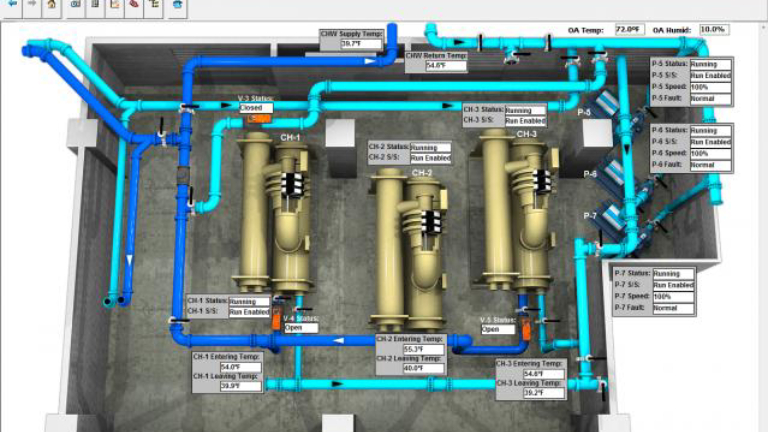Blog
Published: May 09, 2012
Energy Saving Control Strategies Continued: Preventative Maintenance and Recommissioning
In the last post I talked about how a building control strategy works in tandem with a building automation system (BAS) to operate a building efficiently and optimally. In this post I'll talk about the different approaches for new construction versus existing buildings, and the recommended approaches to ongoing building maintenance.


In the last post I talked about how a building control strategy works in tandem with a building automation system (BAS) to operate a building efficiently and optimally. In this post I'll talk about the different approaches for new construction versus existing buildings, and the recommended approaches to ongoing building maintenance.
New buildings versus retrofits
When it comes to building performance, a common mistake people make is to assume that newer buildings are automatically more efficient than older ones. Even for new buildings, it is critical to take inventory of how all of the equipment in the building is controlled and analyze performance to determine if adjustments are necessary.
When new buildings are built, often the engineers that designed and oversaw construction of the building are only tasked with making sure the BAS meets the design specifications and is functionally operational.
Assuming the system was properly configured and operating well at the start, it may soon grow quickly out of sync from its initial configuration.
For this reason, many design engineers will work side by side with BAS engineers and technicians during the construction phase to make sure the building automation equipment, software and systems are properly installed. This isn't always the case, however, and operators of newer buildings should be mindful to get periodic energy audits to help detect potential problems.
For retrofits, it's important to take a critical look at all existing building equipment and how it is controlled. There may have been significant improvements in how to set up and properly optimize the equipment since its original installation date.
Preventative Maintenance and Recommissioning
While continuous monitoring would be the optimal solution to truly maximize building performance, at a minimum the building's systems should be checked on a monthly or quarterly basis as part of a preventative maintenance schedule.
Any type of preventative maintenance approach is better than none. Ignoring basic preventative maintenance is taking a costly "run-to-fail" approach. After all, anything that is mechanical in nature is going to require service and will at some point fail. To think it won't is foolish. With a run-to-fail approach, you have no control over when that costly failure occurs.
For larger retrofit jobs, a building owner might have an engineering consultant manage the project. However, in many cases, the building owner will consult directly with a provider, like Trane, whose experts review the building and its systems, provide options and recommendations for updating and optimizing BAS equipment, as well as properly tuning the control system, including equipment sequencing.
Even doing a simple check-up or tuning of existing controls can do a lot of good. In fact, building operators can potentially save 10 to 20 percent on their energy consumption just by tuning up controls, correcting simple problems such as overwritten schedules and fixing sequencing issues.
Taking it a step further, existing buildings may want to consider "recommissioning" older equipment.
Recommissioining is going back and commissioning building systems to operate at their original design specifications. From the time a piece of equipment is installed, it begins to degrade in performance. If new equipment isn't properly set up to begin with, it may not be living up to its performance promises.
Recommissioning returns the equipment as close to its original design specifications, and, done correctly, will bring an entire system into better balance to improve overall building performance.
Higher level service agreements employ continuous recommissioning, but all building owners should include periodic recommissioning to maximize the performance and lifespan of equipment. Proper maintenance that employs preventative and predictive maintenance practices will likely not need recommissioning, but even buildings built in the last one or two years can suffer from poor performance from their building systems if those systems aren't monitored and maintained.
